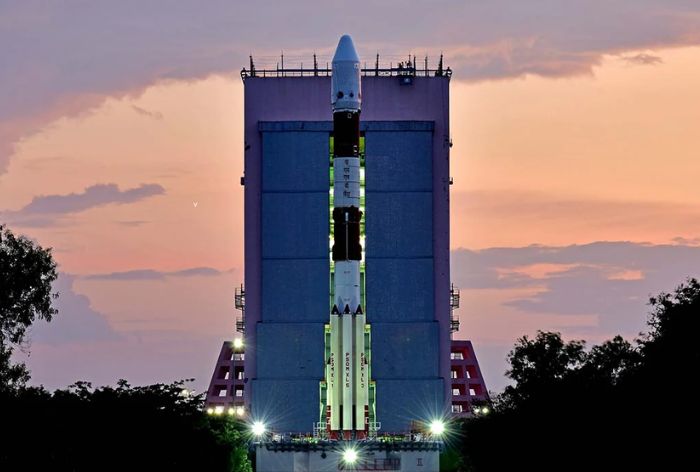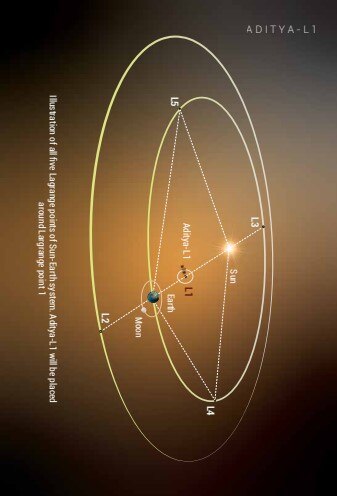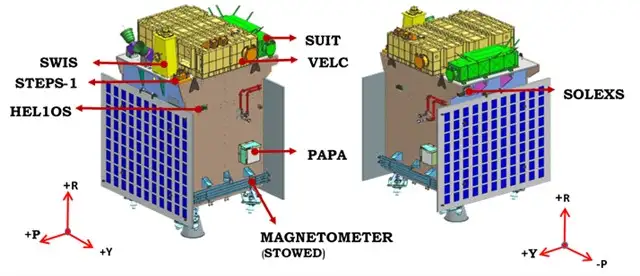The Aditya L1 Mission is an exciting and educational opportunity for students to learn about space science and exploration.

Aditya L1 Mission: After the Chandrayaan-3, it is the Sun for the Indian space agency. Days after landing India on the Moon safely, the Indian Space Research Organisation (ISRO) will be launching the country’s first space-based observatory called Aditya-L1 to study the Sun at 11:50 AM on September 2, 2023. In simple words, the launch of India’s Sun mission is scheduled at 11:50 AM today(Saturday)from Andhra Pradesh’s Sriharikota. The Aditya L1 Mission is an exciting and educational opportunity for students to learn about space science and exploration.
Aditya L1 Mission And UPSC CSE Prelims
Current affairs play a pivotal role in the preparation and success of IAS (Indian Administrative Service) aspirants. Staying informed about current affairs enhances your general awareness and knowledge about the world, including political, economic, social, and environmental issues. This broader understanding is essential for a career in the civil services. Speaking of the Main Examination, particularly in the General Studies papers, questions often require candidates to analyze and discuss current events in the context of governance, policy formulation, and societal impact. A strong grasp of current affairs can help you give relevant examples and arguments in your answers.
With a three-stage selection process, high competition, and comprehensive knowledge, the UPSC Civil Services Examination (CSE) is often regarded as one of the most challenging and toughest competitive exams in India. From objective, launch date, to payloads; there are key things you must remember while UPSC CSE(Prelims) 2024 preparation. Read below.
ADITYA-L1: Questions to Keep in Mind While UPSC CSE Prelims 2024 Preparation
What is ADITYA-L1?
- Aditya L1 will be the first space based Indian mission to study the Sun. The Indian space agency has invited public to register in order to view the proposed launch from the gallery at the Sriharikota space port in Andhra Pradesh. The sun is the nearest star and therefore can be studied in much more detail as compared to other stars. By studying the sun, we can learn much more about stars in our Milky Way as well as about stars in various other galaxies.
ADITYA-L1 Launch Date
- The launch of India’s Sun mission is scheduled at 11:50 AM today(Saturday)from Andhra Pradesh’s Sriharikota.
ADITYA-L1 Objective: Need For The Mission?
For students in India, the Aditya L1 Mission is a source of national pride as it demonstrates India’s capabilities in space science and technology. Learning about Aditya L1 can serve as an introduction to the world of space missions and their objectives. Students can understand the planning, execution, and scientific goals of space missions. Check objectives of ADITYA-L1 Mission.
- Study of Solar upper atmospheric (chromosphere and corona) dynamics.
- Study of chromospheric and coronal heating, physics of the partially ionized plasma, initiation of the coronal mass ejections, and flares
- Observe the in-situ particle and plasma environment providing data for the study of particle dynamics from the Sun.
- Physics of solar corona and its heating mechanism.
- Diagnostics of the coronal and coronal loops plasma: Temperature, velocity and density.
- Development, dynamics and origin of CMEs.
- Identify the sequence of processes that occur at multiple layers (chromosphere, base and extended corona) which eventually leads to solar eruptive events.
- Magnetic field topology and magnetic field measurements in the solar corona .
- Drivers for space weather (origin, composition and dynamics of solar wind .
What is Lagrangian Point?
- As per ISRO, For a two-body gravitational system, the Lagrange Points are the positions in space where a small object tends to stay, if put there. These points in space for a two-body system such as Sun and Earth can be used by the spacecraft to remain at these positions with reduced fuel consumption. Technically at Lagrange point, the gravitational pull of the two large bodies equals the necessary centripetal force required for a small object to move with them. For two-body gravitational systems, there are total five Lagrange points, denoted as L1, L2, L3, L4, and L5. The Lagrange point L1 lies between Sun-Earth line. The distance of L1 from Earth is approximately 1% of the Earth-Sun distance.
- The spacecraft, after traveling about 1.5 million km from the Earth over 125 days, is expected to be placed in a Halo orbit around the Lagrangian point L1 which is considered closest to the Sun. The spacecraft shall be placed in a halo orbit around the Lagrange point 1 (L1) of the Sun-Earth system, which is about 1.5 million km from the Earth. A satellite placed in the halo orbit around the L1 point has the major advantage of continuously viewing the Sun without any occultation/eclipses.

What is Aditya-L1 Payloads?
- The spacecraft carries seven scientific payloads for systematic study of the Sun. All payloads are indigenously developed in collaboration with various ISRO Centre.
- The Visible Emission Line Coronagraph (VELC) instrument is developed at the Indian Institute, of Astrophysics, Bangalore. Meanwhile, Solar Ultra-violet Imaging Telescope (SUIT) instrument is developed at Inter University Centre for Astronomy & Astrophysics, Pune; Aditya Solar wind Particle Experiment (ASPEX) at Physical Research Laboratory, Ahmedabad; Plasma Analyser Package for Aditya (PAPA) at Space Physics Laboratory, Vikram Sarabhai Space Centre, Thiruvananthapuram; Solar Low Energy X-ray Spectrometer (SoLEXS) and High Energy L1 Orbiting X-ray Spectrometer (HEL1OS) payloads at U R Rao Satellite Centre, Bangalore and the Magnetometer at the Laboratory for Electro Optics Systems, Bengaluru.
- “The suits of Aditya L1 payloads are expected to provide most crucial informations to understand the problem of coronal heating, coronal mass ejection, pre-flare and flare activities and their characteristics, dynamics of space weather, propagation of particle and fields etc,” reads the statement on the website.

Payloads along with their major capability of scientific investigation.
| Type | Sl. No. | Payload | Capability |
|---|---|---|---|
| Remote Sensing Payloads | 1 | Visible Emission Line Coronagraph(VELC) | Corona/Imaging & Spectroscopy |
| 2 | Solar Ultraviolet Imaging Telescope (SUIT) | Photosphere and Chromosphere Imaging- Narrow & Broadband | |
| 3 | Solar Low Energy X-ray Spectrometer (SoLEXS) | Soft X-ray spectrometer: Sun-as-a-star observation | |
| 4 | High Energy L1 Orbiting X-ray Spectrometer(HEL1OS) | Hard X-ray spectrometer: Sun-as-a-star observation | |
| In-situ Payloads | |||
| 5 | Aditya Solar wind Particle Experiment(ASPEX) | Solar wind/Particle Analyzer Protons & Heavier Ions with directions | |
| 6 | Plasma Analyser Package For Aditya (PAPA) | Solar wind/Particle Analyzer Electrons & Heavier Ions with directions | |
| 7 | Advanced Tri-axial High Resolution Digital Magnetometers | In-situ magnetic field (Bx, By and Bz). |
What’s Unique About Aditya-L1?
- First-time spatially resolved solar disk in the near UV band
- CME dynamics close to the solar disk (~from1.05 solar radius) thereby providing information in the acceleration regime of CME, which is not observed consistently
- Onboard intelligence to detect CMEs and solar flares for optimised observations and data volume
- Directional and energy anisotropy of solar wind using multi-direction observations
UPSC CSE Prelims Exam 2024 Date?
As per the exam calendar, the Civil Services Preliminary Examination 2024 will be held on May 26, 2024, while its notification will be released on February 14, 2023. The last date to apply for the same is March 5, 2024. The Civil Services (Main) Examination 2024 will be held on September 20, 2024, and will continue for 5 days.
